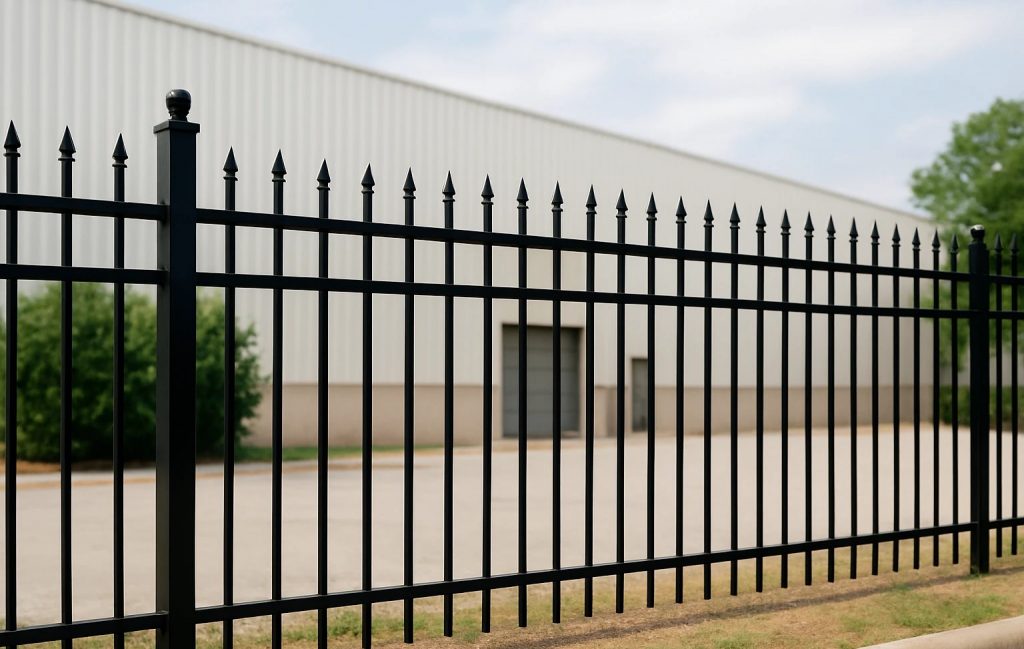Latest Technologies in Industrial Iron Fencing are redefining how businesses secure their facilities. Once limited to traditional designs, modern iron fences now integrate advanced coatings, automated access systems, and smart monitoring tools that improve performance and compliance. These innovations are shaping the future of perimeter protection, making industrial fencing stronger, safer, and more cost-efficient.
The Evolution of Industrial Iron Fences
Iron fences have long been valued for their durability and security. Traditionally, they required frequent maintenance and were vulnerable to corrosion. Today, technological advancements have addressed these weaknesses, offering long-term solutions with reduced upkeep. From protective finishes to embedded electronics, industrial fencing now combines strength with innovation.
Advanced Coatings and Materials
One of the most significant innovations is the use of specialized coatings that extend fence longevity:
Powder coating: Provides a durable finish resistant to chipping and rust.
Galvanization: Adds a zinc layer for enhanced weather protection.
Eco-friendly treatments: Reduce environmental impact while maintaining performance.
These upgrades ensure fences withstand industrial environments without losing aesthetic appeal.
Additionally, businesses now explore hybrid materials. For example, steel fences are increasingly combined with iron to maximize strength and flexibility.
Automated Gate and Access Systems
Modern industrial facilities demand efficiency and security. Automated systems now integrate seamlessly with iron fencing:
Electronic gates: Enable faster entry and exit for authorized vehicles.
Keycard or biometric access: Ensure only approved personnel enter secured zones.
Remote operation: Allows facility managers to control gates via mobile apps or centralized systems.
These innovations save time and increase compliance with workplace safety standards.
Smart Monitoring and Security Integration
Technology has transformed iron fences from static barriers into active security systems:
Embedded sensors: Detect tampering, cutting, or forced entry attempts.
Surveillance integration: Cameras mounted on fencing provide real-time monitoring.
Alarm systems: Connect to central security offices for immediate response.
This smart fence approach allows businesses to turn physical barriers into proactive defense systems.
Energy-Efficient Lighting and Add-Ons
Sustainability is also driving new developments in fencing:
LED lighting: Integrated into fence lines for improved visibility and reduced energy use.
Solar-powered systems: Reduce operating costs while maintaining security standards.
Recyclable materials: Support eco-conscious construction policies.
These options improve safety while aligning with corporate sustainability goals.
Comparing Industrial Fence Options
Iron fences are not the only choice for industrial applications. Depending on project needs, other materials may also fit regulatory or functional requirements:
Aluminum fences: Lightweight and corrosion-resistant, ideal for facilities near water or harsh climates.
Chain link fences: Affordable and adaptable, often enhanced with barbed wire or slats for privacy.
Steel fencing: Heavy-duty and commonly used in high-security zones requiring maximum protection.
Each option provides distinct advantages while integrating with modern technologies.
Cost and Maintenance Implications
While technology adds value, businesses must account for costs. Advanced systems such as smart monitoring or automated gates require higher upfront investment, but they reduce long-term maintenance and liability. For example:
Coatings extend fence life, lowering repair expenses.
Automation reduces manpower needed for access control.
Smart monitoring decreases theft and damage risks.
These factors make modern fencing a strategic investment, not just a protective barrier.
Local Expertise and Compliance
Navigating regulations is essential for any industrial fencing project. City codes often dictate fence height, setback, and safety requirements. Experienced teams specializing in Commercial Fence Chicago ensure that projects align with municipal laws while implementing the latest technologies. Their expertise helps avoid costly delays and ensures compliance.
External Resource for Guidance
For additional insight on modern industrial materials, the American Institute of Steel Construction (AISC) offers research and guidelines that support the development of durable, compliant fencing systems:
This external authority reinforces credibility without competing in the commercial fencing industry.
Conclusion
Industrial iron fences have entered a new era where strength meets innovation. From protective coatings to smart technologies, the latest advancements ensure fences do more than enclose—they actively secure, monitor, and support sustainability goals. By combining iron with alternatives like steel, aluminum, and chain link, businesses can create custom solutions tailored to their needs. With professional guidance and modern technology, industrial fences become an essential investment in safety, compliance, and long-term value.

